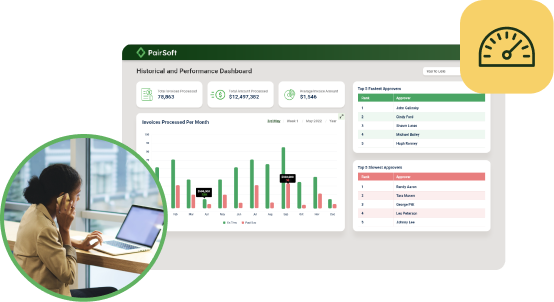
PairSoft
The strongest AP automation, document management, procurement, and fundraising automation platform for mid-market and enterprise companies with integrations to your ERP system.
View all posts by PairSoftPairSoft • December 27, 2017

The travel and expense management (TEM) solution is one of the most useful and widely adopted back-office process technologies on the market today. Organizations of all sizes turn to these systems to reduce processing costs and gain more control over travel and expense (T&E) spend.
By eliminating manual expense reporting, organizations are boosting employee productivity—and their own chances to be major competitive forces within their markets.
Although Levvel’s research indicates that over half of North American businesses have adopted a TEM solution, many companies still resist expense reporting automation. These companies give several reasons for their resistance to adoption, but the leading barrier is a belief that current processes are working.
However, research also shows that in actuality, current, manual-based processes do not work. Companies that do not automate experience higher costs, more frequent reporting errors, and lower employee morale than companies with TEM software. These issues are not only tiresome, but they only grow worse the longer they are left unattended.
This report is for companies that are still hesitant to adopt TEM software. It serves to illustrate the sharp contrast between manual and automated expense reporting. It highlights current trends in expense management among today’s leading organizations, and showcases the benefits of automation.
It also includes an overview of leading TEM software features and functionality, as well a list of strategies for overcoming several common TEM adoption barriers.
Levvel Research surveyed several hundred individuals employed in many different industries to identify current trends among organizations’ traveling workforces and usage of TEM automation software. Typically, the most common manual methods for processing travel expenses are sending paper receipts directly to the AP department or submitting a spreadsheet along with scanned images of receipts.
Both methods place the majority of the burden on the traveling employee, and require careful attention, organization, accuracy, and time. Both are also very inefficient financially and temporally, and tend to lead to errors in reporting and a greater risk of non-compliant or fraudulent employee spend.
Fortunately, survey results show that the majority of organizations are using an expense management software for this process (see Figure 1).
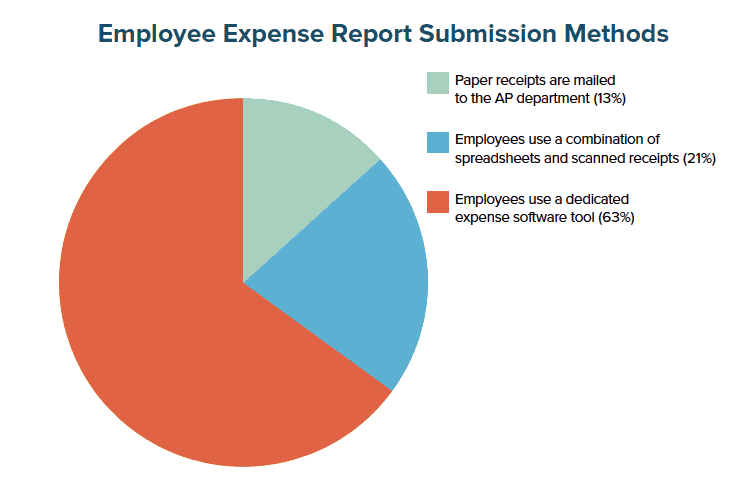
Figure 1: Over half of organizations report using an expense reporting tool
“Please select the method with which your employees submit expense reports.”
There are a few factors that affect the likelihood of whether or not a company has adopted an expense management tool, including company age, culture, and industry. However, Levvel Research has found that the greatest factor is revenue (see Figure 2).
The higher a company’s revenue, the more likely it is to use a dedicated expense management software tool to process expenses. It is also true that, for the most part, the larger the company is, the less likely it is to require mailing paper receipts to the AP department.
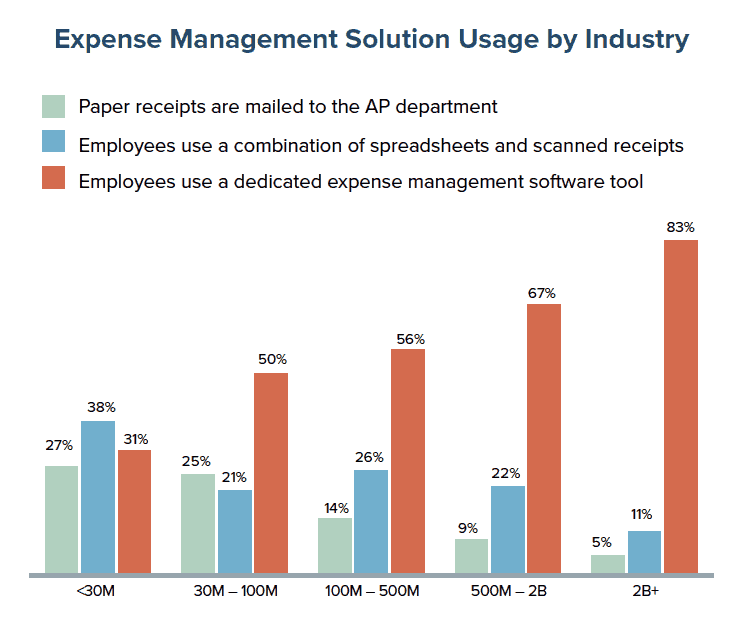
Figure 2: Larger organizations are more likely to have adopted an expense management solution
“Please select the method with which your employees submit expense reports.” and “What is your organization’s annual revenue in the most recent 12-month reporting period?”
This trend is likely due to the fact that companies with higher revenues and more employees typically have more travel, spend, and data that requires careful management. They are also likely to have more resources with which to invest in an expense reporting software.
However, Levvel Research has seen both an increase in more affordable and versatile TEM options on the market, and a correlating increase of interest in TEM technology among lower-revenue companies.
Whether or not a company adopts a TEM solution also depends on its current state pain points. When survey respondents were asked about the leading motivations that led them to adopt a software, the largest issues were manual data entry and inefficient processes, followed by a lack of visibility into spend (see Figure 3).
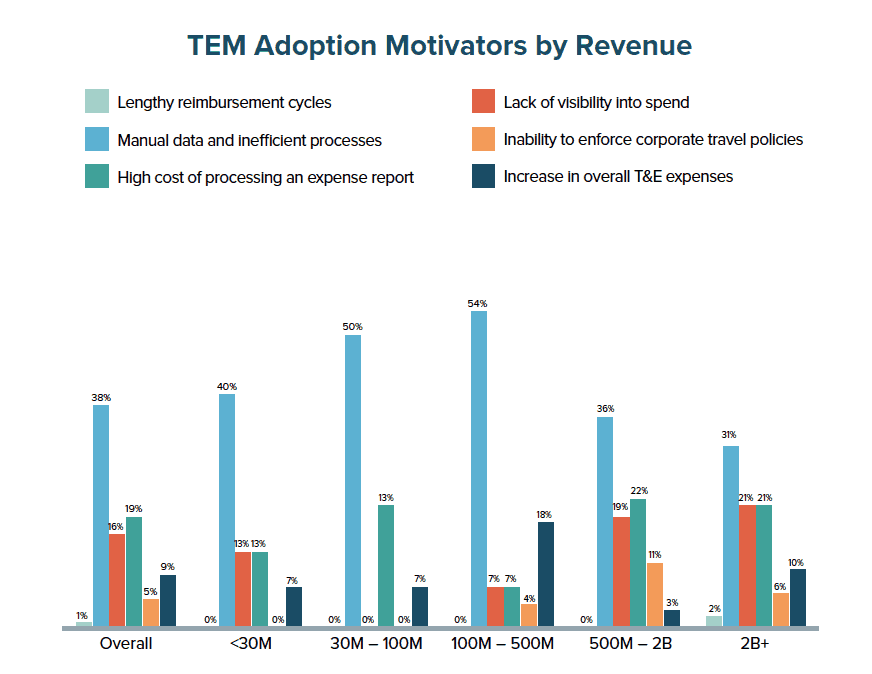
Figure 3: Manual data entry and inefficient processes is the top motivator for TEM adopt
“What were the top reasons your organization ultimately decided to adopt your expense management solution??” and “What is your organization’s annual revenue in the most recent 12-month reporting period?”
Although all revenue segments reported manual processes as their top problem, there were some slight variations across company size. For example, the inability to enforce corporate travel policy and lengthy reimbursement cycles were only highly important issues for companies at the upper middle market (UMM) and enterprise level. This is likely due to larger companies’ lengthier approval processes and stricter controls around spend management.
For example, the healthcare industry is much more likely to report manual processes as the leading motivator, which could be attributed to the fact that the industry’s is inundated with high volumes of paper.
Finance is more concerned with the cost of processing an expense, which may be due to the prevalence of highly paid employees and costly reports. The manufacturing industry’s top motivator is a lack of visibility into spend, which is likely related to these organizations’ low margins (see Figure 4).
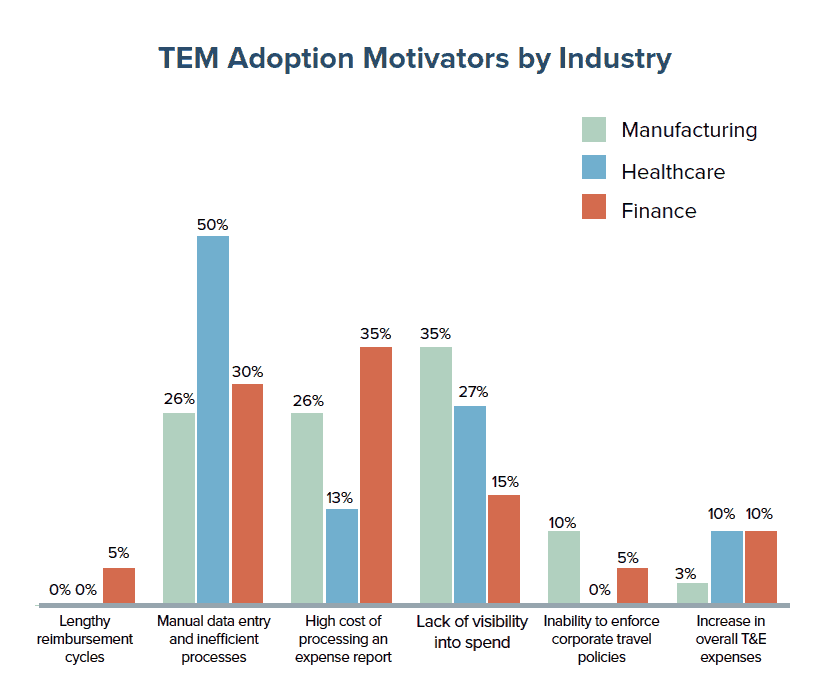
Figure 4: Adoption motivators vary slightly by company industry
“What were the top reasons your organization ultimately decided to adopt your expense management solution?” and “Please select the standard industry description that best fits your organization.”
Once companies have adopted a TEM software, many of the issues listed in the figures above are reduced and/or eliminated.
According to survey results, the top benefits achieved by adopters of TEM software are improved visibility over spend, quicker employee reimbursement, an increased ability to enforce travel policies, and lower processing costs (see Figure 5).
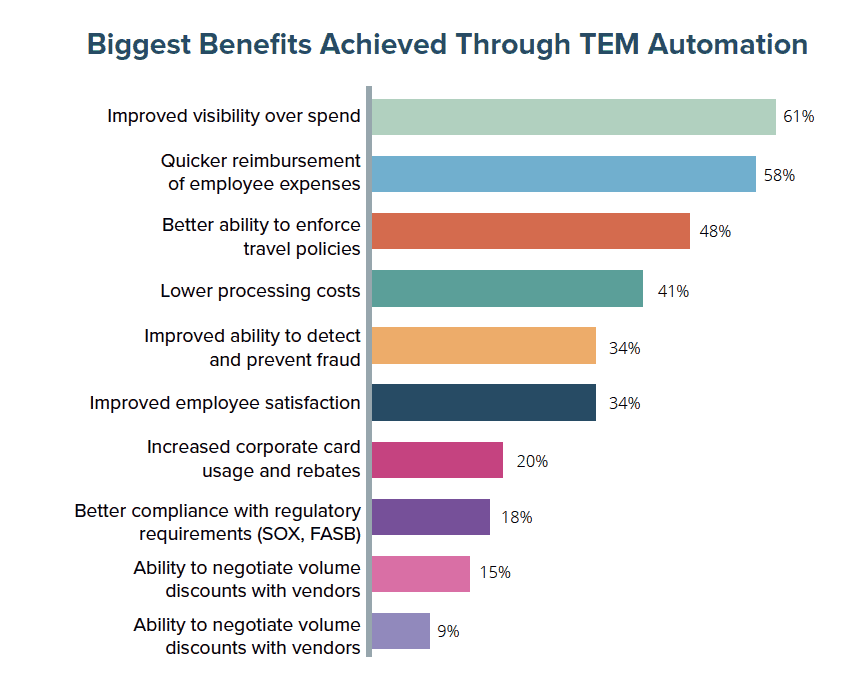
Figure 5: Most Organizations Report Improved Visibility into Spend After Adopting TEM
“What are the biggest benefits your organization has achieved by automating your expense management?”
These benefits have many long-lasting effects for organizations. Improved spend visibility allows companies to identify areas of improvement in their spend management, inefficient purchasing strategies and contracts, and fraudulent employee activity.
Lower processing costs improve a company’s financial state and free up resources for investments. Quicker reimbursement and improved employee satisfaction both lead to boosted employee morale and productivity, which can have a direct effect on a company’s product delivery, competitive advantage, and business success.
The following section offers a high-level guide to today’s leading TEM software offerings, including features, functionality, and services.
TEM solutions consolidate reporting tasks, reduce reliance on paper-based processes, and improve visibility into expense management—all while providing advanced business intelligence and analytics tools to proactively control costs.
This section outlines the features found in today’s leading TEM solutions, from pre-trip authorization through post-trip analysis.
With today’s TEM solutions, users can plan and book a trip in advance, as well as submit travel plans for approval. This eliminates the occurrence of unauthorized expense reimbursement requests after a trip, and it reduces one of the primary problems associated with T&E—spend outside of company travel policies.
Integrated booking and expense management systems incorporate the client’s corporate travel policies, preferred vendors, and spending limits during the pre-trip authorization process. The TEM system sends notifications to employees that are attempting to book outside company spending limits, saving valuable time for both employees and approvers.
Managers also receive pre-trip notifications, are notified when out-of-policy requests are submitted, and may approve or deny requests based on budget restraints or spend limits.
Essential to the pre-trip planning process, online booking functions provide companies with an additional level of control in corporate travel, as well as competitive prices that increase savings.
Online booking provides employees with a tool to book airfare, hotel reservations, and transportation through approved or preferred vendors only, thereby cutting costs and increasing volume-based discounts and frequent traveler rebates.
Some tools automatically create a tentative travel itinerary based on a user’s parameters. For example, a traveling employee can enter the time, dates, and preferred methods of travel for an upcoming trip, and the booking tool will build a plan of ready-to-book items that cover the transportation and accommodation needs for the entire trip, such as rental car, flight, train ride, and hotel stay.
Other tools can save recurring trips for one-click booking, such as for a business professional that makes regular trips to a client or subsidiary company in another state or country.
Most TEM providers offer booking through a partnership with one or more leading travel booking companies, such as GetThere, NuTravel, and Egencia. Some TEM solutions have designed their own native, fully integrated booking tools, while others have a technically-agnostic system that will pull all travel booking information from a vendor of the client’s choice.
However the integration is offered, most solutions automatically transfer itineraries into a company’s TEM system and connect the itineraries to expense reports after a trip has been completed.
TEM is increasingly dependent on mobile functionality, and solution designers are making mobile features one of their top priorities in development. One of the most valuable assets of mobility is the realtime dynamic—traveling employees can submit their expense reports from anywhere at any time, and approvers can see the information clearly, accurately, and immediately.
In many cases, this technology enables expense approval in just minutes.
A fundamental capability of mobile TEM is its receipt capture functionality. Most providers attach pictures of receipts to expense reports for later verification, but many of the leading developers also now provide OCR scanning, which extracts the data from the receipt and automatically matches it to the expense report.
This reduces reliance on manual data entry—instead of entering each individual expense, users need only verify the extracted information and submit for approval. Some TEMs have developed partnerships with commonly used vendors (e.g., food and beverage providers or airlines). These partnerships ensure that employees earn loyalty rewards and negotiated business rates by syncing purchases with the company’s TEM solution.
Mobile apps also allow for IRS-compliant electronic receipts, receipt forwarding, app integration, offline mode, mileage calculators, and other features. Providers are designing their software to be compatible across many devices—users can begin their expense report submission on a tablet or smartphone and finish on a desktop computer without any loss of accuracy or content.
Accurate expense reporting is vital for controlling travel and expense spend. Modern TEM solutions automate expense reporting by prepopulating expense reports from corporate credit card transactions, receipt image capture, and electronic receipts, thus eliminating an otherwise time-consuming and error-prone manual entry process.
The simplest step in this process is submitting each expense, whether pre-calculated or unexpected, and attaching receipts or records of purchase. Expense reporting tools have many advanced features for submitting expense items, including direct bank import of commercial and personal card transactions, global capability (for languages, currencies, tax regulations, etc.), automatic expense categorization based on company policies and type of spend, and more.
Integrating with corporate cards programs is an important element of streamlining expense reporting. Some providers also offer their own travel card program for companies that do not yet have a corporate card program, such as smaller organizations.
With increasing global business travel, some TEM solutions provide in-solution translators and custom translations for specific phrases and words within the system, visible to all employees who work in any given language. Some solutions also offer integration with tax and advisory services.
These provide increased visibility into potential areas of tax compliance failure, immigration law liability, and necessary compliance procedures (e.g., payroll withholding tax) each time an employee books a trip through the company’s TEM solution.
This type of integration is important, as breaches of tax or immigration laws can mean that companies do not uphold their duty of care towards their employees. It also ensures that tax or immigration issues don’t prevent employees from carrying out business while they are traveling.
Levvel Research’s survey results show that expense reporting approval workflow is considered the most valuable TEM feature by most organizations (see Figure 8). This aspect of TEM automation saves employees and managers valuable time by speeding up approvals from managers and reimbursements to employees.
Configurable routing and customizable policy triggers ensure that reports are properly routed with little manual intervention, and automatic escalation settings ensure that requests are approved in a timely manner.
Mobile approvals provide on-the-go managers with a way to manage expense approvals via smartphones, tablets, or any device with email connectivity. Administrative features speed up and control the process with support for bulk actions, comment fields, and central administration and reconciliation of company card transactions.
Improved approval workflow processes result in shorter processing times for reimbursements, thus increasing employee satisfaction and productivity.
While organizations use different methods to reimburse employee expenses, most prefer direct deposit (see Figure 9). Many TEM solutions support direct deposit reimbursement or integrate with clients’ payroll systems. The solutions also allow employees to track the progress of their payment through every step of the submission, approval, and reimbursement cycle.
Gaining access to T&E data has proven to be a significant hurdle in achieving cost control and compliance for many companies. It is difficult to control T&E spending without the ability to identify patterns in travel activity.
Companies that employ TEM solutions have instant, real-time access to key metrics and reporting data to analyze spending at various levels, including employee, department, and supplier. This variable data can be analyzed to eliminate wasteful expenditure through control measures and regular audits.
Companies can also identify frugal and problem users to ensure that approvers and auditors are focusing their attention on the right individuals or departments.
Post-trip analysis tools provide purchasing managers with invaluable information regarding a company’s overall T&E spending habits, which is yet another compelling feature of TEM solutions. There are also standalone T&E auditing solutions available that further relieve the pressure on AP staff by evaluating spend reports to determine weak spots in policies and employee policy adherence.
Many TEM solutions also bring some of the back-end reporting functionality to front-end processes. When submitting expense reports, employees can provide business ratings and reviews to improve spending techniques, enhance vendor relationships, and help select preferred vendors.
Despite the benefits of TEM software, approximately one-quarter of respondents reported they still process expense reports using manual methods. When asked why they have not adopted a solution, the primary reason reported was a belief that current processes are working, followed by a lack of budget (see Figure 6).
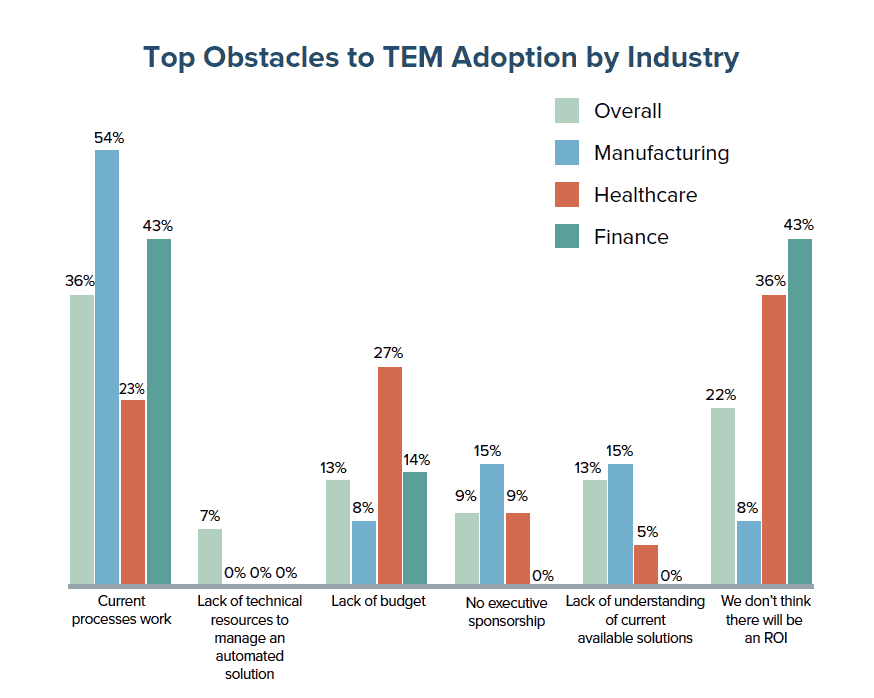
Figure 6: Most organizations do not automate because of a belief that current processes are working
“What is the primary reason your organization has not automated its expense management process?” and “Please select the standard industry description that best fits your organization.”
Some of these barriers vary by industry. Manufacturing companies are more likely to resist automation because of a belief that current processes work as well as a lack of understanding regarding available solutions.
These barriers are likely due to the industry’s slow pace at adopting back-office technology in general, as well as their reluctance to disrupt their operations in any way that could affect their complex and often delicate supply chains.
On the other hand, the finance industry is more concerned with how the solution would affect their resources, as they were the most likely industry to believe there would be no ROI from adoption. This barrier somewhat reflects the industry’s general focus on financial security and quality investment.
Healthcare professionals are also concerned with the financial aspect of adoption, as they list a lack of budget or no ROI as their reason for not automating. This could be due to the fact that 40 percent of healthcare organizations reported annual revenue of under $100M, and they likely have fewer resources with which to invest in technology.
In any of the above cases, Levvel Research believes that the main issue is a lack of education in several areas. The following items illustrate some of gaps in knowledge that lead companies to continue with manual expense reporting—and how to overcome them.
Barrier: Current processes are working
Solution: Benchmark the current state against a fully automated state
Organizations should evaluate their current state to understand the possibilities available to them in expense management efficiency, and to understand how broken these current processes are.
A few current state items organizations can measure include processing costs per expense report, time spent by traveling employees, approvers, and accounting processing expense reports, and the frequency of reporting errors and process issues.
In truth, current processes lead to many problems for employees, cash flow, and business success. One of the best ways to understand that effect is to look at the actual cost to process an expense report.
Table 1 illustrates processing costs based on how much automation a company has. In this example, “Some Automation” refers to companies that have adopted some T&E-related software, such as an online booking tool. A fully automated process involves a holistic TEM solution. On average, costs can drop from over $25 dollars per expense report to under $7 with an automated system.
| Type of Processing | Average Total Cost |
|---|---|
| Manual | $26.63 |
| Some Automation | $17.31 |
| Full Automation | $6.85 |
Barrier: Belief that there will be no ROI
Solution: Measure the cost of manual processing
This belief that there will be no ROI tends to come from both a lack of understanding of the value of TEM software, and a lack of awareness at the actual costs of the current state. Organizations should leverage their findings from their current state assessments to identify their current costs, and then use this data when pricing TEM solutions.
Typically, they will find that the long-term ROI—in both hard and soft savings—far outweighs the cost of automating.
Barrier: Lack of budget
Solution: Take a broader look at the market
As previously noted, there is an increasing number of affordable TEM options available on the market today. These solutions are tailored to the more restricted resources of companies in the small and lower middle market (LMM) revenue segments.
Levvel Research has also found that many companies believe some back-office solutions are more expensive than they actually are, usually because the companies are only familiar with the expensive pricing of big-box providers. This is true of TEM software.
The best way to understand how a solution will fit inside an organization’s budget is to explore as many options as possible, particularly among solutions designed for smaller companies.
Barrier: Lack of understanding of available solutions
Solution: Leverage educational material & talk to providers
Fortunately, readers of this report have already taken one of the necessary steps to overcoming this barrier, which is to seek education on TEM software and the value of an automated process. Another solution, as with when overcoming “a lack of budget” adoption barrier, is to speak with a variety of TEM providers.
This will help organizations expand their perception of what a TEM software should be able to do—and which type of solution is right for their needs.
Barrier: Lack of budget
Solution: Take a broader look at the market
As previously noted, there is an increasing number of affordable TEM options available on the market today. These solutions are tailored to the more restricted resources of companies in the small and lower middle market (LMM) revenue segments.
Levvel Research has also found that many companies believe some back-office solutions are more expensive than they actually are, usually because the companies are only familiar with the expensive pricing of big-box providers. This is true of TEM software.
The best way to understand how a solution will fit inside an organization’s budget is to explore as many options as possible, particularly among solutions designed for smaller companies.
Barrier: Lack of understanding of available solutions
Solution: Leverage educational material & talk to providers
Fortunately, readers of this report have already taken one of the necessary steps to overcoming this barrier, which is to seek education on TEM software and the value of an automated process. Another solution, as with when overcoming “a lack of budget” adoption barrier, is to speak with a variety of TEM providers.
This will help organizations expand their perception of what a TEM software should be able to do—and which type of solution is right for their needs.
Barrier: No executive sponsorship
Solution: Present educational findings
The best way to gain executive buy-in to technology adoption is to educate shareholders. This means leveraging the findings of all the steps above to present three vital things:
These elements should be included in any business case for a TEM solution adoption, and they depend upon an organization carefully evaluating their own business needs in order to make an educated and strategic solution choice.
In order to further assist with this choice, the following profile summarizes the features of one of the travel and expense management industry’s leading providers.
Levvel Research, formerly PayStream Advisors, is a research and advisory firm that operates within the IT consulting company, Levvel. Levvel Research is focused on many areas of innovative technology, including business process automation, DevOps, emerging payment technologies, full-stack software development, mobile application development, cloud infrastructure, and content publishing automation.
Levvel Research’s team of experts provide targeted research content to address the changing technology and business process needs of competitive organizations across a range of verticals. In short, Levvel Research is dedicated to maximizing returns and minimizing risks associated with technology investment. Levvel Research’s reports, white papers, webinars, and tools are available free of charge at www.levvel.io.
